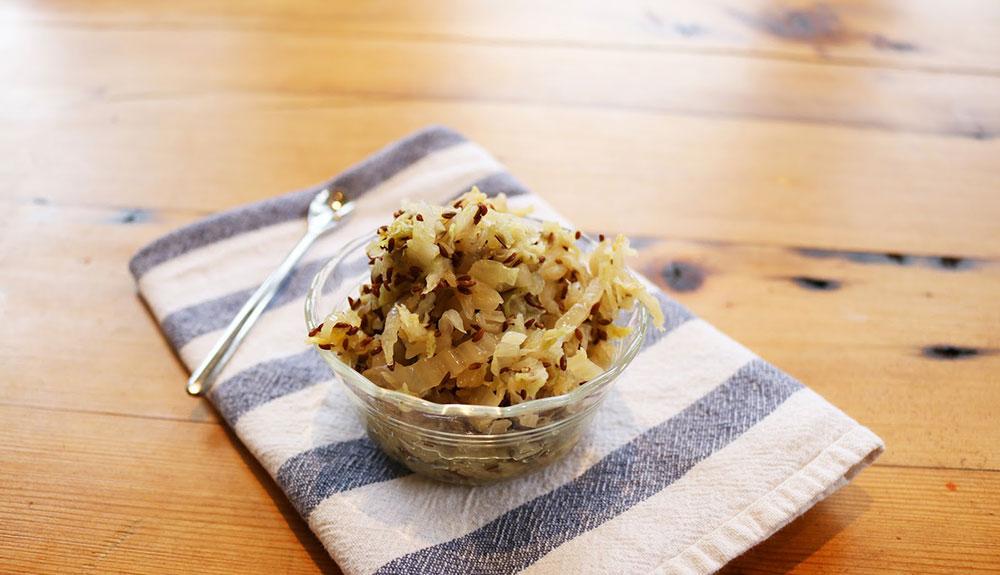
Add the cabbage to a large bowl and sprinkle with the salt. Using your hands, begin working the salt in by massaging and squeezing the cabbage. After about 5-10 minutes, the cabbage will become watery and limp—more like coleslaw than raw cabbage. When the cabbage is broken down, add the caraway seeds and stir to combine.
Add the cabbage to a large mason jar—this is done easiest using your hands. Every so often, push the cabbage in the jar down with a spoon to make more room. Pour out any liquid released by the cabbage while you are adding it to the jar.
Cover the top of the mason jar with a kitchen cloth and seal it with a rubber band. This allows air to flow in and out of the jar. Set this aside on the countertop and out of the way—not in the fridge.
For the next 5 -10 days, press down on the cabbage every so often with a spoon. This helps the cabbage to ferment. As the cabbage releases its liquid, it will become more limp and compact and the liquid will rise over the top of the cabbage.
This is the fermenting process! As it's fermenting, keep the sauerkraut away from direct sunlight and at a cool room temperature—ideally 65° F to 75° F. Check on it from time to time and press it down if the cabbage is rising above the liquid.
Taste it after 5 days—if it tastes good, it’s ready! If it doesn’t taste like sauerkraut, it needs more time to ferment. When it's ready, now it's time to cover it with a lid and store it in the fridge. We love this with our Ultimate Seitan Pastrami Reubens, but you could add it to any sandwich you'd like!
This sauerkraut will keep for at least two months in the fridge. As long as it still tastes and smells good, it is!